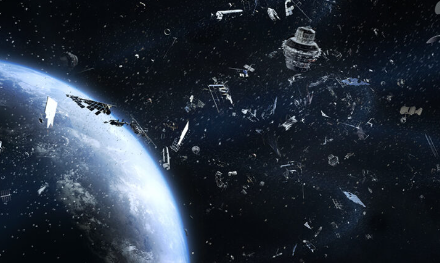ESA Develops Zero-Debris Satellite
The deal between three leaders in the European space industry—Airbus Defence and Space, OHB, and Thales Alenia Space—and the European Space Agency (ESA). It was a big step forward in getting rid of space junk. Large platforms for satellites in Low Earth orbit (LEO) that meet Zero Debris guidelines are being built thanks to these contracts.
The Zero Debris Initiative
Space junk is becoming a bigger problem, so ESA came up with the Zero Debris method. By 2030, this new standard aims to stop the creation of space junk in Earth and moon orbits. As previously stated, the Zero Debris plan calls for strict changes to be made to designs. These changes will be enforced by the Space Debris Mitigation Standard, which will be put in place in 2023. This standard, which has the support of twelve countries and many businesses, lays out the necessary changes that must be made for future ESA flights to follow these new rules for preventing debris.
Design and Collaboration
The European companies that were hired have to each come up with a platform for big LEO satellites that don’t leave any debris behind. This partnership shows that everyone in the business is committed to these sustainability goals. In the first part of the contract, the goal is to reach the System Requirement Review (SRR) level, which means finishing an initial design that takes into account important technical choices within 18 months. During Phase 2, these main contractors will work with other tech companies to get the platform ideas to the Preliminary Design Review (PDR) level.
Broader Coverage and Future Steps
ESA is expanding its attempts to design satellites with no debris to include smaller satellites like CubeSats as well as bigger ones. This all-around method makes sure that all satellites, no matter their size or orbit, help keep the space environment healthy. Through these projects, ESA shows leadership that makes it possible for the space industry in Europe and around the world to adopt environmentally friendly methods that will keep space activities safe and going for a long time. Finally, the new contracts and the collaborative nature of this project are important steps toward reaching the Zero Debris by 2030 goal. They will also start a new era of space sustainability that is important for future space operations and adventures.
About Zero Debris standards
Zero Debris standards stress reducing building and demolition waste to almost nothing. Important facts are:
- Started in Europe to make building areas more environmentally friendly.
- They need things to be carefully sorted, recycled, and used again.
- Use cutting-edge tools for managing waste.
- Important because they help cut down on trash going to landfills.
- Help lower carbon emissions by wasting as little material as possible.
- They have to follow strict rules, like those for LEED approval.
- Legally required by local environmental rules.
- They encourage people to use products that are good for the environment.
- Push for architectural plans that take recycling at the end of life into account.
- Projects to get rid of all trash are in line with global environmental goals like the Paris Agreement.
Month: Current Affairs - June, 2024
Category: Science & Technology Current Affairs








